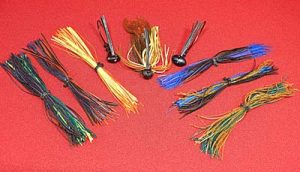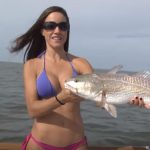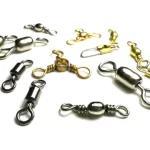Cold-water bass fishing can present challenges, especially when targeting fish in early spring. Battling the cold while trying to catch bass requires the right approach. Understanding which baits to use and employing the right tactics can significantly increase the chances of success. Here’s how to tackle cold water bass fishing with the best baits and strategies.
Stay Warm and Comfortable
A successful fishing trip starts with being prepared for the cold. Dressing in high-quality, weather-appropriate clothing ensures comfort and focus on the task at hand rather than fighting the cold. Opting for layers that can be easily added or removed helps maintain comfort as temperatures fluctuate. Quality gear, like AFTCO clothing, provides the protection needed for cold conditions, allowing full attention on the fish instead of discomfort.
Crankbaits for Covering Water Quickly
When searching for bass, crankbaits are a top choice for efficiently covering larger areas. These baits excel at eliciting reaction strikes. Enhancing their performance can be done with a few adjustments, such as adding a lead strip under the bill to help the crankbait dive faster and target deeper edges of weeds. This technique improves the bait’s effectiveness and helps in triggering bites. For maximum results, switching to Gamakatsu EWG trebles can further increase success rates.
For bass near changes in the bottom structure, crankbaits shine by allowing fast coverage of the area. After finding spots with bites, following up with a jig or Carolina rig can lure more bass from the same area, particularly the less active ones.
Carolina Rig for Weed and Hard Bottom Areas
The Carolina rig remains one of the best tools when fishing the edge of weeds adjacent to harder bottom areas. Using a 6″ Power Lizard or a 4″ Missile D-Bomb provides an excellent bait selection. A key adjustment to maximize effectiveness is using a monofilament leader. Unlike fluorocarbon, which sinks and keeps baits lower in the water column, monofilament floats and keeps baits higher, triggering more strikes. Additionally, a float can be added to enhance visibility and bait action when the bite is slow.
Jigs for Thorough Area Breakdown

Once bass are located, slowing down the presentation with jigs is crucial for further exploration of the area. The Arky head jig, ideal for both weeds and rocks, is particularly useful due to its wide footprint, allowing it to navigate through weeds without getting stuck. Matching the jig’s trailer and skirt to the local forage, such as craws, can enhance effectiveness.
The ball head jig offers versatility for fishing both rocks and weeds, and using a cut skirt helps create the desired action for bass feeding on baitfish or craws. A football jig excels when bass are around rocky structures, perfectly imitating the movement of craws.
Shaky Heads for Precision Fishing
Shaky head jigs are essential for targeting bass with finesse. The ball head model works well on weed edges with worms or fluke baits, while the football head is ideal for crawling baits on rocks. A 7ft medium-action baitcaster rod spooled with 20lb braided line and a 10lb fluorocarbon leader ensures maximum feel and sensitivity, enabling subtle adjustments to retrieve styles to match bass preferences.
For tough bites, adding color and scent accents with products like Spike-It can make a difference in enticing reluctant bass.
Drop Shot for Cleanup Bait
When bass become finicky, the drop shot rig provides a great follow-up to clean up bites or entice hesitant fish. Utilizing forward-facing sonar technology, it’s possible to pinpoint bass and tailor presentations to their exact preferences. A 6″ Missile Magic worm rigged on a drop shot hook is highly effective, offering both natural and subdued action depending on how the bass are reacting.
Targeting Bass Near Weed Tops
During sunny, calm days, bass often move to the tops of weeds, where they warm themselves in the shallower water. Spinnerbaits and vibrating jigs are excellent choices for this situation. A longer cast across the weed tops often triggers feeding bass. By making contact with the weeds, more bites are likely, as both bass and baitfish take advantage of the warmer water and food sources near the surface.
Cold-water bass fishing in early spring presents unique challenges, but with the right gear and strategies, success is within reach. By staying warm, using fast-moving baits like crankbaits, and employing rigs like Carolina rigs, jigs, and drop shots, bass can be located and targeted effectively. Adapting to changing water temperatures and bass movements ensures the spring season starts off on the right foot.
Image/Source: BassResource





